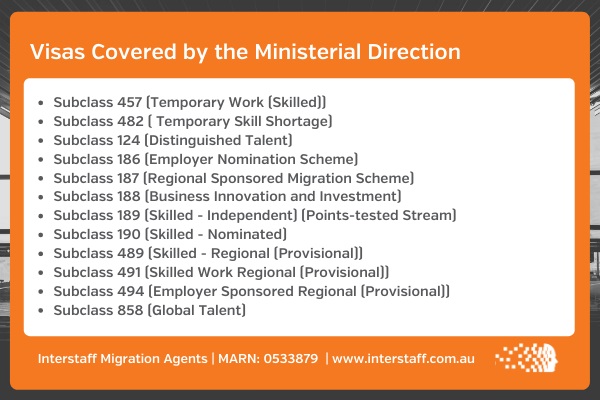- within Immigration topic(s)
- with Senior Company Executives, HR and Inhouse Counsel
- in Africa
- in Africa
- in Africa
- with readers working within the Accounting & Consultancy, Basic Industries and Consumer Industries industries
How long do visa applications take?
Visa application processing times vary significantly. Updated processing times for most visa types are issued every month by the Department of Home Affairs and are indicative of the actual processing time for recently finalised applications.
Processing priorities are usually established by Ministerial Direction while processing times are impacted by application volumes and seasonal peaks, the complexity of a case, and whether or not an application is complete.
Ministerial Direction- Priority Processing
The Migration Act 1958 allows the Minister for Immigration to issue Directions to establish the priority in which visa applications should be considered by the Department of Home Affairs.
There are currently two Directions setting out the order of priority for skilled visa processing: Direction no. 92 for permanent and provisional visas and Direction no. 93 for Subclass 482 and Subclass 457 visas. Both Directions took effect in July 2021, replacing earlier Directions issued in August 2020.
Visas covered by the Ministerial Direction
Permanent visas allow the holder to live in Australia indefinitely; provisional visas are generally issued for a period of time (e.g. 5 years) in which the visa holder/s must satisfy certain conditions (such as living and working in regional Australia or establishing a business in Australia) before they are eligible to apply for permanent residence.
The following visas are covered by the current priority processing Directions:
How the Government is Prioritising These Visa Applications
Both Directions set out visa priority in similar terms in the following general order:
- Employer Sponsored or Regional Sponsored where:
- the nominated occupation is specified on the Priority Migration Skilled Occupation List (PMSOL)
- the nominated occupation is an Agriculture Sector occupation
- Applications identified through the Global Talent Program.
- Occupations in a Critical Sector.
- Employer Sponsored or Regional Sponsored applicants under a Designated Area Migration Agreement (DAMA)
- Applications made by Accredited Sponsors
- Subclass 494 (Employer Sponsored Regional (Provisional))
- Subclass 491 (Skilled Work Regional (Provisional))
- Independent Skilled Migration Visas (Subclass 187, 489, 190, and 189)
Critical occupations and sectors and applications for positions in regional Australia are favoured.
What this means for Businesses & Skilled Visa Applicants | Key Considerations
The date on which an application is lodged does not necessarily establish its priority. This means a Subclass 494 visa application submitted based on work in a critical sector may be processed very quickly, while the same visa for an applicant in a non-critical sector may take longer.
Throughout the Pandemic, the migration program remained open and visa applications made by individuals in Australia and overseas were accepted – many are still pending. However, because overseas applicants for provisional and temporary visas required a Travel Exemption to enter Australia we saw that overseas applicants were generally not processed unless a Travel Exemption was approved.
Since 15 December 2021, Travel Exemptions are no longer required for fully vaccinated eligible visa holders and processing of skilled visa applications is now proceeding with priority being accorded according to the Directions with some delays being reported in this transition time.
Unvaccinated visa holders must still obtain a Travel Exemption to enter Australia.
What To Expect Moving Forward | Border Re-Opening & Changed Processing Priorities
Nationally, Australia continues to progress towards re-opening fully, while each State and Territory has established different quarantine and entry requirements adding a layer of complexity for skilled visa holders and their families coming to work in Australia.
In a sign of Australia's post-COVID-19 transition, almost 200,000 people arrived in Australia in December 2021, up from just over 72,000 in November 2021 and the highest number of arrivals since Australia's COVID-19 border restrictions commenced in March 2020.
If you or your business require skills not listed in the critical sector or on this processing priority list, we suggest you plan early and expect delays. Some visa requirements do take several months to prepare.
The content of this article is intended to provide a general guide to the subject matter. Specialist advice should be sought about your specific circumstances.
[View Source]


